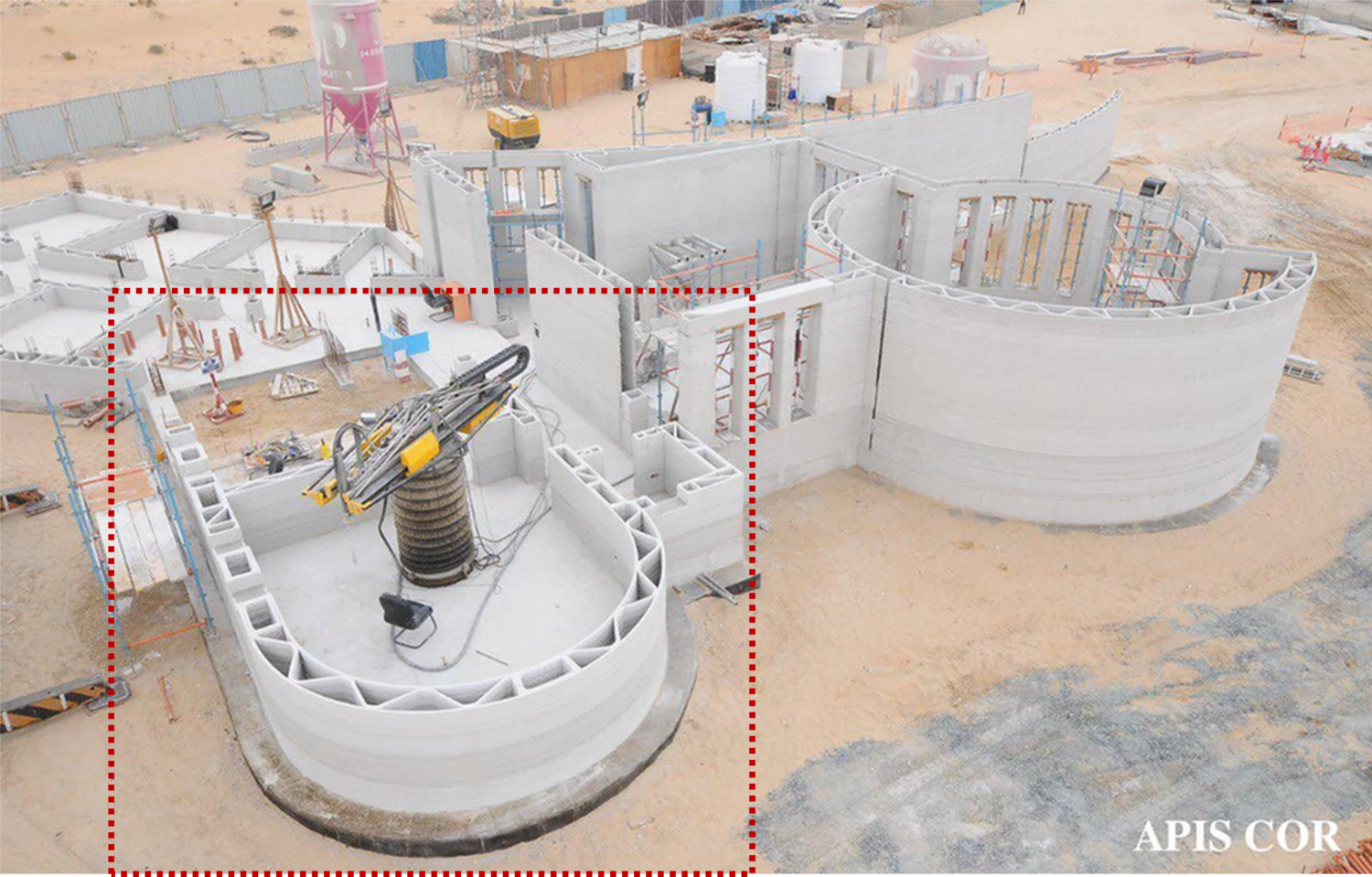Research Summary Report C06
Integration of Additive Manufacturing in the Construction Process
[11.02.2022]
Placzek, Gerrit; Doctoral researcher,
g.placzek@tu-braunschweig.de,
TU Braunschweig, IBB
The integration of additive manufacturing into construction requires an interdisciplinary approach. The different competences of the team – digital fabrication in architecture (Hack), geodesy and photogrammetry (Gerke) and construction management (Schwerdtner) – lead to a research from diverse perspectives on the various scalar levels of construction to be viewed holistically: component, building and industry Scale.
Within Subproject C06, our goal is to create a continuous digital and lean-based process chain from design (using BIM method) to fabrication (using AM method). Based on process models, we develop production systems for the construction industry 4.0.
Summary
Currently, one of the most followed approaches is to produce walls replacing masonry for in-situ constructed single-storey houses (either with straight extruded geometries or with slightly curved freeform). By simply replacing conventional technologies the potential of additive manufacturing will not be fully exploited. Concepts and strategies have to be developed and discussed considering its applicability for individual construction projects. The correspondent research questions address fundamental aspects in the field of construction operations and of project delivery systems in the construction industry. Therefore, it is one of the goals of subproject C06 to analyse different AM methods on a component level in order to develop an adequate value chain on a building scale and evaluate future implications on an industry scale.
Two concepts are predominant in current research “in-situ” and “off-site” production. However, the high procedural flexibility of AM offers a third option: “on-site” production. This concept corresponds to stationary (pre-)manufacturing of components on the construction site.
In order to determine the right concept more knowledge is necessary to create a future value chain. Shotcrete 3D Printing is one AM method that is currently used for off-site production. In our research, we use it as an example to investigate parameters like processing and lead times, material or resource consumptions.
Current state of research
As we pointed out earlier, from a construction management point of view, the role of additive manufacturing methods is still unclear when it comes to the “right” use cases within construction (e. g. house building, bridges or tunnels).
To address this uncertainty, we firstly analysed automated and robotics systems (ARS) used for extrusion-based concrete additive manufacturing as a part of a construction process planning. We identified four main categories (flexibility, mobility, productivity and environment) that could be decision criteria for an appropriate production system. Next, we will try to quantify those criteria by defining relevant parameters for a future comparative analysis.
Secondly, based on the achieved results regarding the investigation of ARS and initially classified production concepts in-situ, on-site and off-site (see previous RSR), we now develop potential production strategies. For example, production strategies within the production concept in-situ vary between “whole structure printing” (using a gantry-system) and “section-by-section printing” (using a smaller robot; fig. 1). Hybrid solutions might be adequate as well depending on the described criteria. Those terms and production strategies are currently under discussion.







